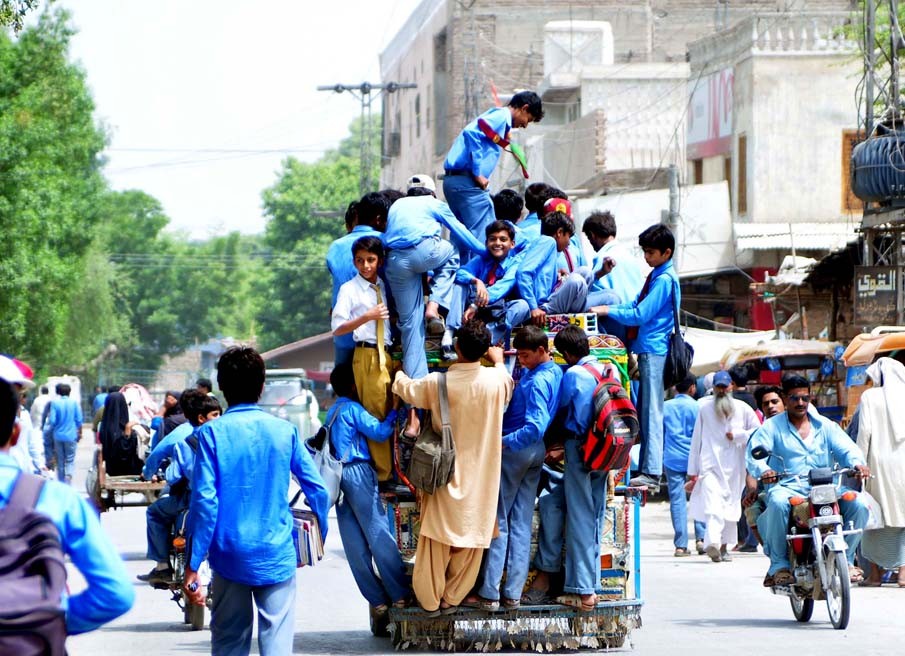
Accidents on the National Highway in Sindh have become a regular feature, a major problem that needs to be addressed urgently

Here is a chronicle of many deaths which were not foretold: on a sunny day of January this year, while students of a private school in Daulatpur (a small town in Nawabshah district) were observing silence for their 19 unfortunate fellows who lost their lives in a road accident a year ago, scores of people were waiting in Karachi’s Jinnah Postgraduate Medical College to receive dead bodies of their loved ones who were among those 62 persons reduced to ashes a couple of days ago. They died when their bus collided head-on with an oil tanker and caught fire near Shikarpur. The very same day near Tando Muhammad Khan, a speedy car over ran 80-year-old Raji Meghwar and her 40-year-old daughter Neta who were waiting for the local bus along the roadside.
These three accidents, which occurred in three different divisions of the Sindh province, reveal how precious lives are being lost on the highways across the province. Rarely a day passes when someone does not die on the roads decorated with flashing emblematic signboards of ‘friendly highways’. Sadly, the recurrence of such accidents has reached such an extent that Sindhi newspapers have allotted special sections where the previous day’s number of casualties is carried.
Reasons for such an alarming death rate due to traffic accidents becomes obvious when one witnesses a drastically poor road infrastructure, non-compliance of traffic laws and jam-packed coasters trying to attain jet speed.
Life of an ordinary public/private transport user is at risk in interior Sindh. In Sukkur region alone, more than 120 people died in road accidents in the second half of year 2014.
Ironically, as immediate attention is restricted to the number of fatalities only; hundreds of injured people and their families continue to suffer for rest of their lives. "Majority of women and children who survive in such accidents take quite a long time to come out of that shock", says a psychiatrist based in Sukkur.
In May this year, a marriage party of 15 people was electrocuted in Khairpur Nathan Shah when the bus carrying it erroneously touched the hanging high-voltage power lines. Imagine the pain of victims’ families that were happily taking the groom to the bride’s town in the bus. There are many such examples which speak volumes about the poor road infrastructure in general and criminal negligence of drivers in particular.
Statistics show that majority of accidents occur on the National Highway -- the ‘jugular vein’ of province’s economy. Therhi bypass -- a place near Khairpur has turned into a Bermuda triangle where scores of people have lost their lives during the last couple of years.
This rapid rise in number of accidents on the National Highway may be partly attributed to the ongoing maintenance and repair work but mainly due to overspeeding and ignorance of law. One hardly comes across speed checking radars down the National Highway which tempts the drivers to outpace every other’s vehicle.
The number of fatalities could have been fewer had there been trauma centres on main highways as repeatedly promised by concerned authorities after every major accident. Rescue services need improvement. Availability of proper health facilities in public sector hospitals is also poor. "Death toll in Khairpur Nathan Shah incident soared due to lack of ambulances and lifesaving equipment in the taluka hospital," says Mukhtiar Chandio, a local TV channel reporter.
Generally, jaywalkers are feared as the possible victims of any accident but in our case, paradoxically, people sitting inside a well-decorated bus or van are more at risk than the pedestrians. One of the reasons that escalate chances of accidents is overcrowding in the local transport. A brief visit to any bus terminal in interior Sindh would reveal that no law on earth exists which restricts the local transporters to load maximum number of people on the vehicles. This overcrowding is incentive driven. Fare is slashed to half if you sit on the roof of the bus/van. This ubiquitous practice jeopardises lives of those poor commuters who frequently travel to big cities for their livelihood.
A couple of recent developments seem to be a positive policy response by the authorities concerned. Sindh High Court has banned Qingqi rickshaws across the province after rejecting the stay order acquired by rickshaw association in 2014. Despite the fact that these rickshaws were facilitating low income people in Karachi, they were a major cause of accidents in interior Sindh.
Secondly, earlier this month Sindh government has amended the Motor Vehicles Ordinance 1965 by increasing the compensation amount to the deceased and injured persons. According to the new bill, a family of any person who dies in road accident will get Rs250,000.
Given the rate at which people are dying on roads in Sindh, it seems as if both people and the authorities concerned have by and large reached a conclusion that nothing can be done to avoid such incidents. However, enforcement of traffic rules coupled with better road infrastructure can make the highways safer. The number of traffic accidents is much lower in northern region of the province, thanks to the relatively better road network.